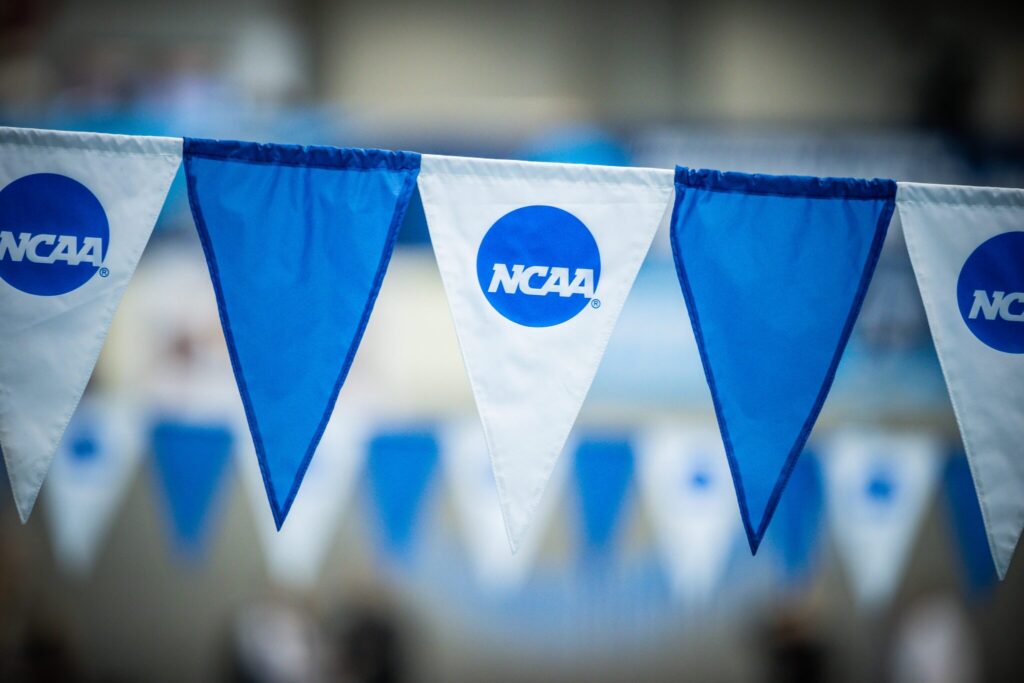Out of the 34 google form responses SwimSwam received, 18 reported that their estimated total payout was “more” than they expected. Six athletes reported the payout to be “less” than expected while eight reported it to be “around the same” as expected.
Although a small dataset, none of the 13 mid-major athletes reported Alston payments. Another commonality found in the data is that it seems in order to receive an estimate for “lost NIL,” the athlete also had to earn NIL money as a student-athlete.
SwimSwam received estimates from two swimmers late last week after the numbers were posted. These numbers had mixed reviews.
The claim’s website states: “PLEASE NOTE: these are estimates. Your final settlement payment cannot be finalized until the claims period has ended (January 31, 2025), attorney’s fees and costs are awarded (on or after April 7, 2025), and final approval has been granted (on or after April 7, 2025). These estimates can give you a good understanding of your approximate settlement payment, but they are not final.”
Among the responses include an NCAA Champion, numerous Power 4 (formerly Power 5) athletes, and mid-major swimmers. No divers or water polo athletes are included in the data.
Big Ten Reported Data
A 5 year swimmer in the Big Ten who was a 3x individual NCAA Champion reported an estimated $3700 for “athletic services,” $600 for “lost NIL payment,” and $3100 for the Alston payment. According to the NCAA, schools may award up to $5,980 annually for the Alston Award.
Another Big Ten athlete who was a 3x NCAA qualifier received around the same estimate for the Alston payment, reporting an estimate of $3140.17. The athlete also reported $613.16 for “athletic services,” but $0 for “lost NIL payment. The athlete also said they have not earned any NIL money as a student-athlete.
A 3-year Big Ten athlete that was an NCAA scorer in two seasons and qualified for the meet in a third, reported $299.47 for athletic services, $63.60 in “lost NIL,” and $1956.10 for the Alston payment. Despite only swimming for three years, this athlete reported they earned about $500 in NIL money – which seems to be correlated to whether athletes were able to cash in on “lost NIL” money – athletes had to have earned NIL money to be eligible for losing it.
SEC Reported Data
An SEC athlete that was a 2x NCAA qualifier, reported $408.15 for “athletic services” and $1956.10 for the Alston payment. This athlete has $0 estimated for lost NIL but also reported they did not earn any NIL money as a student-athlete.
Another SEC athlete saw much higher numbers, reporting $521.58 lost for “athletic services.” This athlete swam at three NCAA Championships. They received the same estimate of $1956.10 for the Alston payment. This athlete says they have earned about $3000-4000 of NIL money during their career and have an estimate of $1292.85 in the “lost NIL payment” category.
ACC Reported Data
Two ACC athletes from the same school saw much different numbers. One swam for two years with the program but did not make the conference roster in either year. That swimmer reported numbers of $286.92 in athlete services and $3140.17 in Alston. The other swimmer competed for half a season, thus did/has not scored at ACCs, and reported $113 in athlete services.
A fellow ACC athlete saw higher numbers, but competed for four years and scored at ACCs in all four seasons. This athlete reported $613.16 in athletic services and $3140.17 in the Alston payment. They also reported $324.48 in lost NIL money, more than the $200 they estimated they earned.
Pac-12 Reported Data
A Pac-12 athlete and 4x individual NCAA Champion received estimates of $286.92 for athlete services and $3427.09 in Alston payments. This athlete said they were “not eligible” for lost NIL payments.
Mid-Major Reported Data
Most mid-major athletes only reported receiving estimates for “athlete services.” A Big East athlete reported $499.73 and was a conference ‘A’ finalist in three events in three seasons. Two athletes from the same school in the CAA reported $391.05 of athlete services, and both athletes made a CAA ‘A’ final at least three times during their careers. An athlete in the A-10 reported $222.11 in athlete services and was a 5x individual ‘A’ finalist at A-10s.

